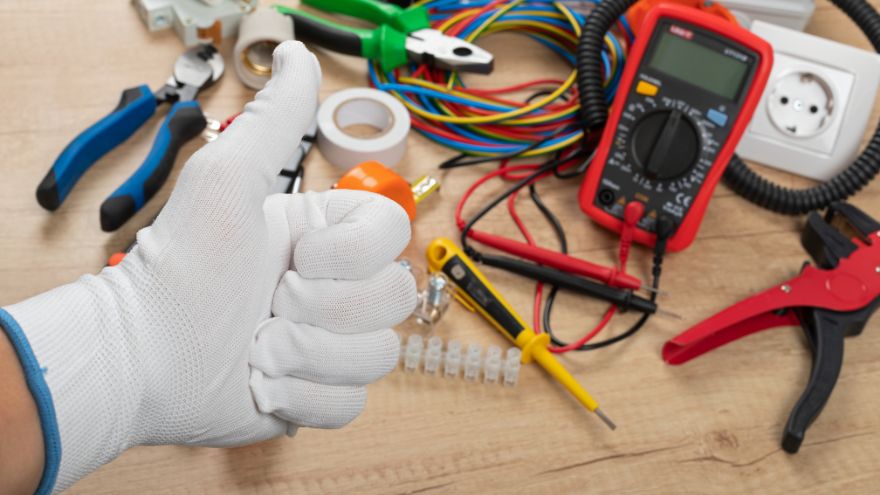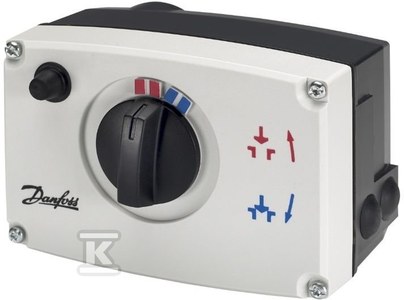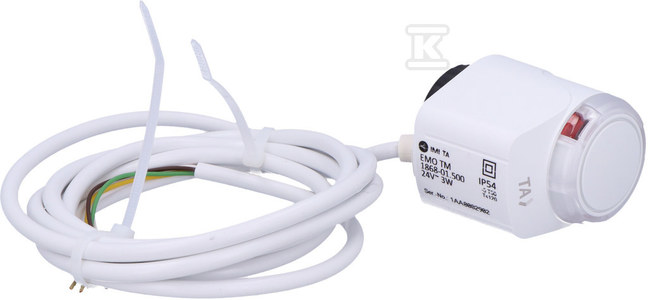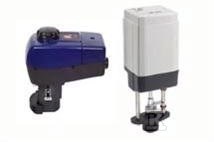Electric drives have numerous advantages. First of all, it is quiet operation and maintenance-free operation for many years. But how to choose the right electric actuator for a given application? Check out the short guide and then see the offer in our wholesaler.

Check out electric actuators at the Onninen wholesaler
How does an electric actuator work?
The construction and operation of the electric actuator is very simple. Such a device must be connected to the power supply and the controller. After receiving the voltage, the electric motor starts and drives the screw through a gear transmission. On it, in turn, there is a stationary nut that changes its position in accordance with the rotation of the propeller. In this way, the piston attached to the nut can extend or retract in the electric drive body.
The screw mechanism has many advantages: a high level of precision, transfer of high stresses and quiet and failure-free operation. Similarly, the electric motor has a low noise level and high efficiency. That is why electric actuators are very popular.
Types of electric actuators
 The advantages of electric drives and their popularity mean that you can find very different models of these devices. In addition to linear motion actuators, you can also find rotary solutions - used primarily to open gates. Depending on the type of load, the propeller itself will have a different structure. You can find trapezoidal, spherical or roller threads. The former is available in a symmetrical form (double-sided actuators) and asymmetrical (pushing or pulling actuators - the piston load occurs only in one direction). Individual models may also differ in the mounting or length of the piston rod (single-section or telescopic).
The advantages of electric drives and their popularity mean that you can find very different models of these devices. In addition to linear motion actuators, you can also find rotary solutions - used primarily to open gates. Depending on the type of load, the propeller itself will have a different structure. You can find trapezoidal, spherical or roller threads. The former is available in a symmetrical form (double-sided actuators) and asymmetrical (pushing or pulling actuators - the piston load occurs only in one direction). Individual models may also differ in the mounting or length of the piston rod (single-section or telescopic).
Not every electric actuator must have a built-in piston. In many situations, a trolley moving on a propeller works well. The simplified structure and better access to the most important components of the mechanism facilitate the maintenance and repair of such drives.
What should you pay attention to when purchasing an electric actuator?
When choosing the right electric actuator, you must always remember the function it is to perform. Therefore, you should pay attention to aspects such as:
- The maximum force available to a given drive.
- Dimensions of the electric actuator - will it fit in the space intended for it?
- Operating mode (double-sided, pushing or pulling).
- Durability and resistance to external conditions - especially in the case of models intended for operating swing gates.
 In addition to large electric actuators, our offer also includes small devices for controlling central heating or other hydraulic systems. In such cases, job characteristics are also important. The EMO TM proportional actuator is controlled by voltage from 0 to 10 V and with a convenient 2 m cable, and can be used in various systems in both dry and wet rooms. In turn, the Danfoss AMV20 electric drive , also powered by direct current, is controlled by a three-point signal.
In addition to large electric actuators, our offer also includes small devices for controlling central heating or other hydraulic systems. In such cases, job characteristics are also important. The EMO TM proportional actuator is controlled by voltage from 0 to 10 V and with a convenient 2 m cable, and can be used in various systems in both dry and wet rooms. In turn, the Danfoss AMV20 electric drive , also powered by direct current, is controlled by a three-point signal.
The most important parameters of electric drives and actuators
Regardless of the purpose of the drive, it will have several important parameters. An example is the AME 85 WM electric actuator controlled by an analog signal , the description of which can be found:
- Duty cycle time, indicating how long it takes for the piston to retract and extend.
- Stroke length, indicating maximum extension.
- Maximum energy consumption given in watts or VA, based on which you can easily calculate the average electricity consumption and, therefore, the cost of use.
- Supply voltage. For smaller devices it will be DC direct current,
 models powered by AC alternating current are more powerful. It is also necessary to ensure appropriate power supply voltage.
models powered by AC alternating current are more powerful. It is also necessary to ensure appropriate power supply voltage. - Pressure force given in newtons. To convert this into weight, divide the given value by 10. Therefore, a pressure force of 2000 N corresponds to a weight of 200 kg.
- IP protection level. It informs whether the housing protects the device against dust and water.
Each electric actuator has its own operating characteristics that must suit your needs. Therefore, it is worth asking a store employee - for example by phone or e-mail - which model will work best in specific conditions.